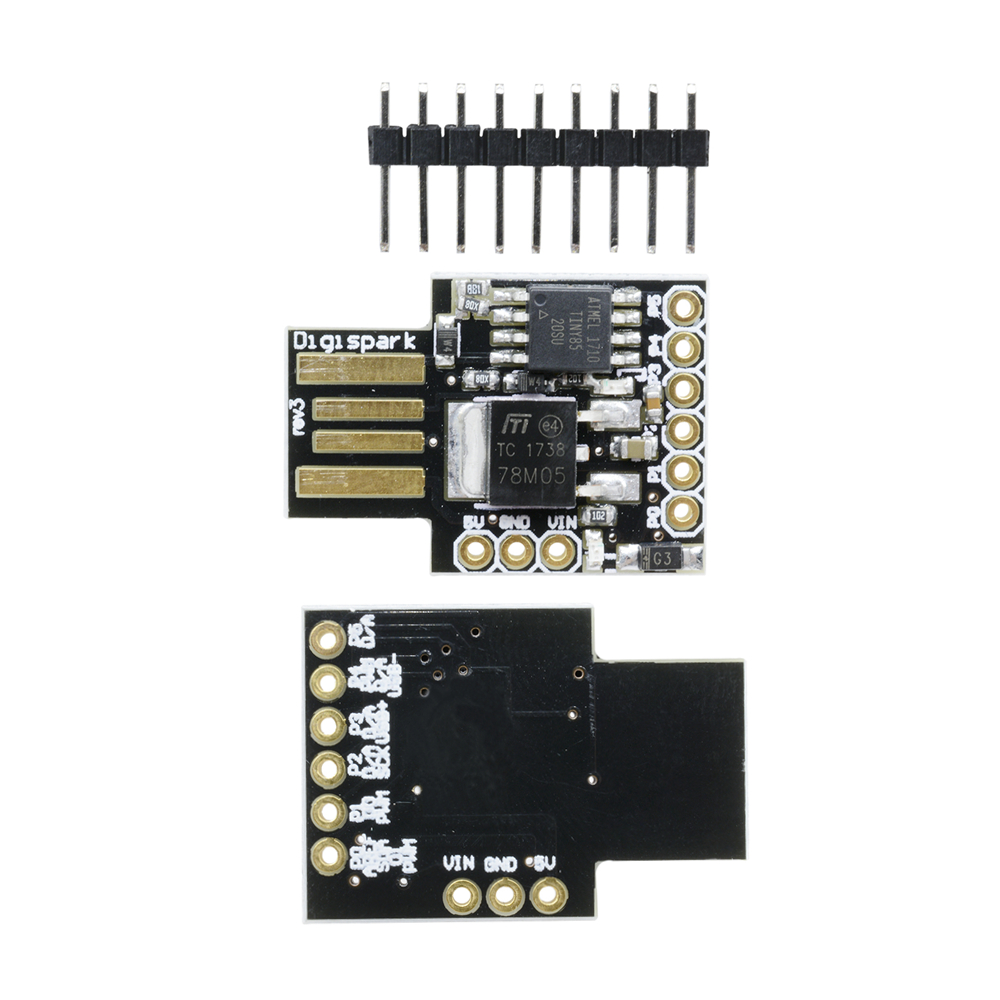
- ATTINY USI UART HOW TO
- ATTINY USI UART FULL VERSION
- ATTINY USI UART SERIAL
- ATTINY USI UART FULL
- ATTINY USI UART SOFTWARE
Summary 18 I/O, PDIP20P3, 2kB flash, 4 PWM, 20MHz, USI, USART. If not, you will have to do the work yourself. All of the ATtiny microcontrollers that come in PDIP packaging, with links to datasheets. From this starting point you might also find a ready to go implementation for the USI. They also link to Atmel's Application Note AVR307, which is a good source for understanding this. In a search I found this site, which is about implementing UART with the USI.

ATTINY USI UART FULL
If BufStart is the cell after BufEnd the buffer is full (overflow), and we have no choice but to throw away the incoming character. If BufStart and BufEnd are equal the buffer is empty (underflow), and reading a character from the buffer returns -1. This adds a bit to the complexity of the program, but would be useful to help you to resynchronize when you get an out-of-sync data stream. Extensions Edgar Bonet has suggested using ISR (TIM0COMPAvect) to test the stop bit, and signal an error if it's zero.
ATTINY USI UART FULL VERSION
If you want to go the hard way, you might be able to program a hybrid software/hardware UART interface by utilizing some functions of the USI. BufEnd points to the first free cell at the end of the buffer. Here's the full version of ATtiny84 USI UART program: ATtiny84 USI UART Program. You can also get them running in Atmel Studio, by including the source files.
ATTINY USI UART SERIAL
There are also lots more libraries, that provide bit banged serial interfaces. I think your best bet is to use existing libraries, like the SoftwareSerial library. You only might need some of the definitions, which you can get by including the arduino.h file. All of the ATtiny microcontrollers that come in PDIP packaging, with links to datasheets and summary sheets, as of. Getting I2C working with attiny processors has been yet another long-time project of me. You don't need to burn the Arduino bootloader to use libraries, that were written for the Arduino IDE. Attiny4313 and I2C master using USI Sat 13 July 2013 By Tero Koskinen. What sticks in my mind is that it's got many more GPIO pins than other attiny chips it's otherwise an ATtiny, with USI etc. There's an appnote (AVR515) telling how it differs from the atmega48. Instead it has a USI (universal serial interface), which does not have all the capabilities needed for UART ("serial") interface. But for SMBus (or PMBus) it's clear to me that USI is the clear WINNARR ) freebird1127: allegedly the attiny48 is coming soon too. If you don't want me to respond, then don't use phrases like "too large".The ATTiny84 does not have a hardware UART peripheral. Just so you know, I am the resident Surly Curmudgeon.
ATTINY USI UART HOW TO
Have you done a simple Forum search for "usi usart" and "usi uart" and explored the prior discussions? This tutorial will solve that problem, first by reviewing what I2C is and how it works, then by going in-depth on how to implement I2C in Atmels ATTiny USI (Universal Serial Interface) hardware. and all of the above on separate pins.Īnd much more for about the same price as Tinys.
ATTINY USI UART SOFTWARE
(word deliberately picked) How is using a complex, problem-prone setup like USI with a timer involved (AFAICR) more straightforward than the well-documented USART? Since ATtiny13 does not have hardware USART/UART in some cases we’re forced to use Software UART. What possible difference would it make to only present certain aspects? For example 9600 baud is 1666 CPU cycles at 16MHz, which is 208.25 when divided by 8, 208 whole CPU cycles with a 0.12 drift. I dont know if Software Serial supports TTL code uploading but I think not (depends on the bootloader as stated down).

The following table lists each ATtiny microcontroller by the first release date of each datasheet. USART peripherals have more features than USI peripherals. With appropriate software support, it can be used to implement an SPI, IC or UART interface. If you decide to lay out all the criteria in the first place, maybe my dander wouldn't rise. We need to choose the right Prescaler value for the regular ATtiny clock speeds of 1MHz, 8MHz and 16Mz and a range of common UART baud rates of such as 9600, 14400, 28800, 57600, 115200. The USI is a multi-purpose hardware communication module. If you're done arguing, could we get back to the actual question?


 0 kommentar(er)
0 kommentar(er)
